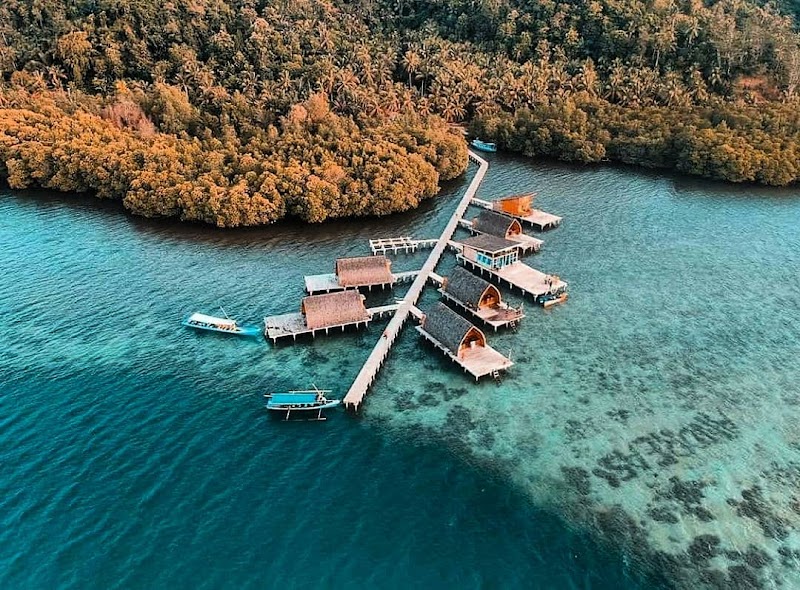
Exploring the Thrills of the Lampung Krakatoa Festival
The Lampung Krakatoa Festival offers an exhilarating mix of volcanic adventure and vibrant cultural celebration on Indonesia’s southern coast. Experience a rugged hike around Krakatoa’s slopes combined with local ceremonies that honor its fierce geological history.
Stay Hydrated on the Trail
Bring at least 2 liters of water per person. Drinking stations are limited, and the tropical heat can intensify dehydration.
Wear Supportive Footwear
Choose hiking boots with strong ankle support and good grip to tackle the volcanic gravel and slippery volcanic rock. Avoid running shoes or sandals.
Plan for Early Starts
Start your hike early in the morning to avoid midday heat and to catch the best views before afternoon clouds roll in.
Check Weather Conditions
Weather can shift quickly, especially during transitional seasons. Rain makes volcanic rock slippery and trails muddy. Adjust plans accordingly.
Exploring the Thrills of the Lampung Krakatoa Festival
Each August, the Lampung Krakatoa Festival springs to life on the southern coast of Sumatra, Indonesia. Far from a typical celebration, this festival places adventurers right at the doorstep of Krakatoa, the fiercesome volcano that famously reshaped the region in 1883. Here, natural spectacle meets cultural reverence, offering an inspiring blend of adrenaline and insight.
Krakatoa itself commands respect. Standing roughly 813 meters above sea level, the volcano dares hikers to trace its rugged slopes, cutting through volcanic ash and swaths of tropical forest. The popular Island Trek route covers around 9 kilometers round trip, demanding a mix of stamina and careful footing as you navigate uneven terrain dotted with hardened lava flows and dense vegetation. As you ascend, the landscape shifts from humid lowland jungle, where birds call with urgent energy, to open ridges revealing sweeping views of the Sunda Strait. The waves below seem to push forward with relentless intent, mirroring your own persistent steps upward.
The festival celebrates this dramatic environment with ceremonies honoring the island’s geological power and the communities living in its shadow. Events include traditional dances, local music performances, and guided boat tours that get you close to Krakatoa’s rugged coastline. Beyond the cultural immersion, festival-goers can participate in ecological walks that highlight how this fiercely volatile land supports rare wildlife and plant species adapting to constant change.
Preparation here is crucial. Hydration points along trails are sporadic, so carry at least 2 liters of water per person. Footwear should be sturdy with strong ankle support to counter loose volcanic gravel and slippery rocks, especially if rains arrive. The best window for visiting ties directly to the dry season—between June and September—when trails firm up and the skies clear, offering unobstructed views of the volcanic cones and the blue horizon beyond.
While the hike demands moderate fitness, it rewards with unforgettable vistas and tactile proximity to one of the world’s most active volcanic areas. Be alert to sudden weather shifts and take time to absorb the landscape’s raw energy: the ground still hums underfoot, and the sea around Krakatoa wraps the island with restless currents. This isn’t just a trek; it’s a direct encounter with nature’s unyielding forces, inviting respect over conquest.
Whether you come for the festival’s vibrant community spirit or the rugged adventure surrounding Krakatoa, the experience is both a physical challenge and a chance to connect deeply with a land defined by power and renewal.
Nearby Trips
All Adventures
Boat Charters
Water Activities
Adventures near Lampung, Indonesia
Discover the unique and memorable adventures that make Lampung, Indonesia special.
Frequently Asked Questions
Is the Krakatoa climb suitable for beginners?
The trek is moderate, with steady climbs and uneven terrain. Beginners with a reasonable fitness level can complete it if properly prepared and paced.
Are there guided tours during the festival?
Yes, local guides offer tours that include cultural insights and safe navigation of the volcanic paths, enhancing your understanding of Krakatoa’s history and geology.
What wildlife might I encounter during the hike?
Expect to see tropical birds such as kingfishers and monitor lizards sunning on rocks. The island’s volcanic environment supports unique species adapted to the terrain.
Can the festival be experienced without hiking?
Absolutely. Boat tours and cultural events along the coast provide spectacular views and rich engagement with local traditions for less active visitors.
How crowded does the festival get?
While the festival draws visitors, it remains relatively low-key compared to larger Indonesian festivals, offering a focused and intimate adventure experience.
What safety precautions should I take against volcanic activity?
Krakatoa is monitored constantly; visitors should check official volcanic activity updates and follow guidance from park authorities to avoid restricted or dangerous zones.
Recommended Gear
Sturdy Hiking Boots
Protects feet on sharp volcanic rock and provides ankle stability on uneven surfaces.
Water Bottle (2+ liters)
Essential to avoid dehydration under tropical heat with limited access to fresh water.
Light Rain Jacket
Protects against sudden tropical showers and wind during shifting weather conditions.
Sun Protection (hat, sunscreen)
Necessary to guard against intense equatorial sun exposure along open ridges.
Local Insights
Hidden Gems
- "Sertung Island's quiet beaches allow for peaceful views of the Krakatoa volcano from afar."
- "Sunset Point on Anak Krakatoa offers a rarely crowded vantage to watch lava steam and waves combine."
Wildlife
- "The Javan hawk-eagle, a rare raptor, occasionally soars the skies above Krakatoa during the dry season."
- "King cobras inhabit the forest floors—stay alert on quieter trails."
History
"Krakatoa's 1883 eruption was one of the most powerful volcanic events recorded, drastically altering the regional geography and climate, and this legacy shapes the festival's cultural rituals and storytelling."
